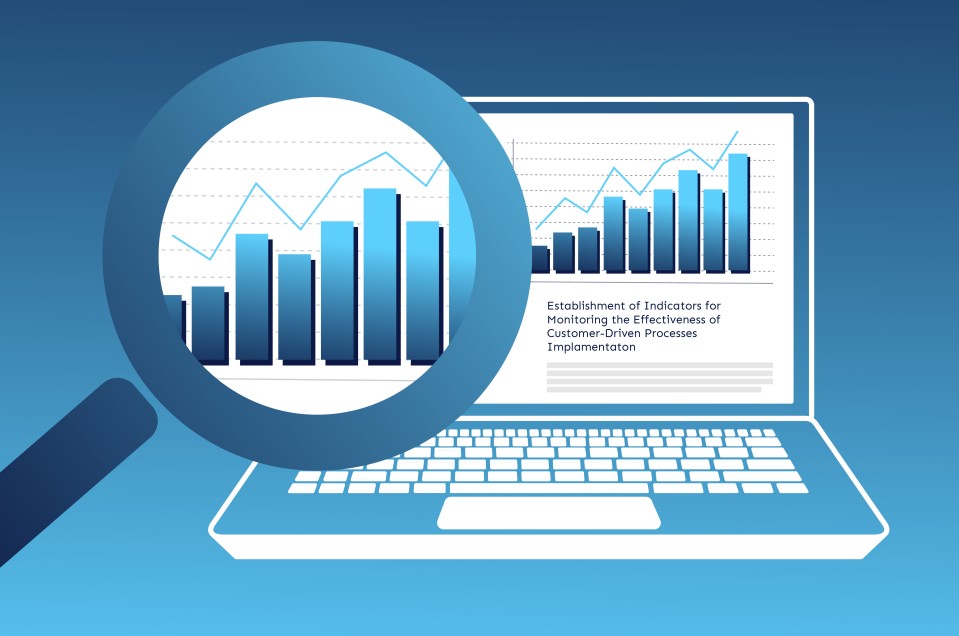Total Quality Manage...
18413 | 6 Apr 2023

A company's success depends heavily on its ability to provide exceptional customer experience. As such, organizations are increasingly adopting customer-driven approaches to their operations, aiming not only to meet but exceed their customers' expectations. However, to ensure the effectiveness of these customer-driven processes, it is crucial to monitor and measure their impact on the business. This is where establishing indicators for monitoring the effectiveness of customer-driven processes implementation comes in.
KPIs are used to measure progress towards important business goals. While high-level KPIs measure overall business performance, low-level KPIs focus on specific tasks and projects managed by individual teams. It is crucial that KPIs are well-defined and established so that teams and individuals know what they are trying to achieve and when they are trying to achieve it.
To ensure KPIs are well defined, businesses often follow the SMART criteria. This means KPIs should be Specific, Measurable, Achievable, Realistic, and Timely.
KPIs are only useful when they are properly defined and scaled appropriately.
It is important that KPIs for customer-driven processes are customer-centric. This means that they should measure the performance of a customer-centric business. Businesses can establish their own steps within the performance monitoring process based on their own needs and objectives. However, it is important to follow a strategy for monitoring KPIs effectively.
Digital transformation has made it easier to monitor, promote, and upgrade the KPI system. KPIs are a powerful tool that can help businesses achieve their goals. However, businesses must also have access to a large amount of data to make them useful.
KPIs are quantifiable measurements used to evaluate the performance of an organization, individuals, or processes. KPIs are used to track progress towards achieving goals and objectives and are often used to identify areas for improvement. KPIs can be used in a variety of industries, including finance, marketing, operations, human resources, and more.
There are many types of KPIs and ways to use them. It is important for the organization to select those that will provide the most benefit as it is important to understand the organization's vision and strategy. . KPIs must be measurable over a longer period of time, but they can change, if organizations change their directions and goals. A combination of resources, systems, organizational culture, and management support is needed for the implementation of KPIs to be successful.
There are several types of KPIs that organizations can use to measure their performance, including:
Employee KPIs are used to measure the performance of individual employees or teams. They include metrics such as employee satisfaction, employee turnover rate, and performance goals.
KPIs offer several benefits to organizations, including:
Increased motivation and engagement - KPIs can motivate employees by providing clear performance expectations and goals. When employees understand what is expected of them, they are more likely to be engaged and motivated to achieve their goals.
While KPIs offer many benefits, there are also some challenges that organizations need to consider, including:
The efficiency of the implementation of business processes is an extremely important factor that affects the success of a company's operations. Both structural and operational indicators can be used to measure efficiency, but different indicators require different monitoring methods.
Structural efficiency indicators are divided into four basic groups based on the facilities or symbols that are part of the EPC business model processes. These indicators are based on:
Monitoring the effectiveness of implementation using structural indicators shows the level of complexity of the currently implemented business processes, which is a good starting point for addressing issues related to the implementation of processes according to market requirements.
Operational indicators allow business systems to better understand processes in internal and external comparison with best practices. They can be broadly categorized into four groups:
Monitoring the effectiveness of implementation is more demanding for operational indicators and requires much more thorough preparation than for structural indicators. In order to use these indicators, a comprehensive information system must already be established in the enterprise system, which is upgraded with a suitable software tool that allows managing data on the implementation of business processes. Monitoring of operational indicators for KPI implementation allows for immediate verification of the effectiveness of the activity or process compared to previous iterations.
In conclusion, establishing key performance indicators is crucial for monitoring the effectiveness of customer-driven processes implementation. SMART criteria should be followed to ensure KPIs are well-defined. KPIs should be customer-centric to measure the performance of a customer-centric business. It is important to have a strategy for monitoring KPIs effectively, and digital transformation has made it easier to do so. By establishing and monitoring KPIs, businesses can ensure they are meeting their goals and providing the best customer experience possible.
What are your thoughts on the subject above? Feel free to post a comment or start a discussion.
Leave A Comment